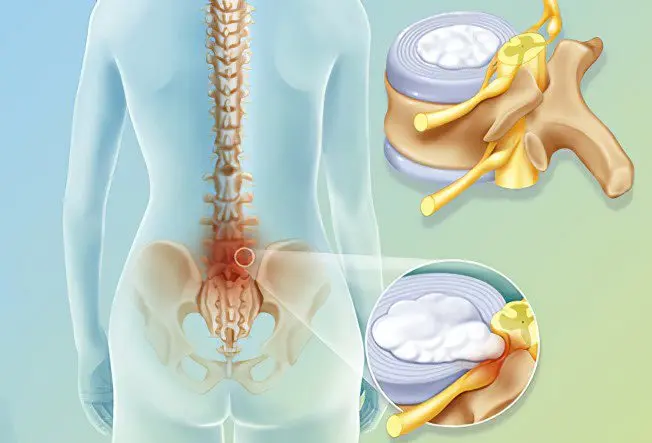Contents
- Features of pain in the legs
- 15 causes of pain in the legs
- 1 PAD – Peripheral Arterial Disease
- 2 Deep vein thrombosis
- 3 Peripheral neuropathy
- 4 Electrolyte imbalance
- 5 spinal stenosis
- 6 Radiculitis
- 7 Arthritis
- 8 Crick
- 9 Sprain
- 10 Convulsions
- 11 Inflammation of the muscles of the lower leg against the background of flat feet and passion for running
- 12 Marching foot (overload fracture)
- 13 Tendonitis
- 14 Phlebeurysm
- 15 Roth-Bernhardt disease

Leg pain is more than just discomfort. It worsens the quality of life, restricts mobility, and sometimes, is a signal of dangerous diseases.
The lower limbs perform not only a supporting, but also a motor function. It is on them that the main load falls, pressing the entire weight of the human body. Therefore, even minor disturbances in the musculoskeletal or bone apparatus, as well as in the functioning of the nervous and cardiovascular systems, can lead to painful sensations.
Pain can be mild or very severe, short-term or long-lasting, accompanied by swelling, redness or blueness of the skin, bulging veins, and other symptoms. The features of the clinical picture directly depend on what exactly provoked the painful sensations.
If the pain is not caused by obvious reasons, for example, playing sports and persists for a long time, it is necessary to consult a doctor and find out the etiology of its occurrence.
Features of pain in the legs
The nature of the pain directly depends on what caused it. Pain is a broad concept, it can have the following features:
Breaking, bursting or pulling pain in the limbs occurs against the background of vein diseases.
Severe pain that worsens with exertion and improves with rest indicates muscle pain (myositis).
Reflected pain is a consequence of radicular syndrome (sciatica).
If the pain is dull and aggravated by walking, this may signal damage to the joints.
Acute pain of the type of lumbago indicates damage to the nerve endings or the spinal column.
15 causes of pain in the legs
Pain in the legs can be caused by various reasons: problems with the veins, nervous system, joints, spine, and more. If you let the disease take its course, then serious complications will not keep you waiting. Therefore, it is necessary to find out the cause of pain in the lower extremities immediately after their appearance, which will allow you to choose the right therapy.
1 PAD – Peripheral Arterial Disease

Pathology is accompanied by an abnormal narrowing of the arteries that feed the limbs, because of which they do not receive enough blood. The disease manifests itself in numbness, weakness and cramps in the legs that occur while walking.
An external sign is a change in the color of the skin of the legs. They remain cool to the touch, regardless of the ambient temperature.
Sometimes it is possible to completely get rid of PAD by people who have quit smoking. However, it is not always the bad habit that causes peripheral arterial disease. If the disease progresses for a long time, surgery may be required.
2 Deep vein thrombosis

Blood clots most often form in the lower legs and thighs. Sometimes the process of their formation is not accompanied by any symptoms. However, it is not uncommon for the body to let you know that pathological processes are occurring in the veins. Signs of thrombosis are pain and swelling of the extremities. They turn red and become hot to the touch.
Thrombosis is a dangerous disease that requires immediate medical attention. The most formidable complication is a pulmonary embolism, in which a detached blood clot enters the lungs. This condition poses a direct threat to human life.
Therapy is reduced to taking drugs aimed at preventing the formation and stopping the growth of blood clots, as well as the destruction of existing clots.
3 Peripheral neuropathy

When nerve fibers are damaged, the transmission of impulses to the brain occurs with disturbances. Most often, peripheral neuropathy develops in people with diabetes. However, disorders can be triggered by taking certain medications, an injury, or a previous infection.
Since peripheral neuropathy affects nerve fibers, it is characterized by the following symptoms: tingling in the legs, crawling, numbness and weakness.
4 Electrolyte imbalance

If the balance of potassium, sodium and calcium is disturbed in the body, then the muscles lose their ability to function normally. The shift can occur due to intense sports, in which a person sweats profusely and drinks little. The first sign of failure is cramps and numbness, which is accompanied by weakness in the limbs. To prevent electrolyte imbalance, during intense training it is necessary to drink water and eat foods that can compensate for mineral deficiencies.
A similar situation can occur when taking certain medications, for example, when undergoing chemotherapy. The appearance of cramps in the limbs must be reported to the attending doctor.
5 spinal stenosis

With stenosis, a narrowing of the channel inside the spine occurs. Bone tissues begin to put pressure on the nerve fibers, which provokes the appearance of pain in the legs. Clamping of the endings leads to numbness and weakness in the limbs. They gradually lose weight, disturbances in the work of the pelvic organs join: delay or sudden separation of urine, deterioration of potency. The main focus of therapy is taking medications. If the progression of stenosis cannot be stopped, the patient is prepared for surgery.
6 Radiculitis

A pinched nerve in the lower part of the spinal column leads to pain in the legs. Its intensity varies: from unbearable and shooting, then mild and pulling.
Infringement of the nerve roots occurs with displacement of the vertebrae, spasm of the gluteal muscles, herniated disc, spinal stenosis. Treatment depends on the cause that provoked sciatica. Most often, it is aimed at stopping pain and relieving inflammation. If the result is not achieved, then surgical intervention is required.
7 Arthritis

Inflammation of the synovial membrane of the joint, its capsule, cartilage or other elements is always accompanied by pain in the legs. They swell, it becomes difficult for a person to perform the usual actions. There is no cure for arthritis completely. However, lifestyle changes, weight loss, and exercise help to alleviate well-being. You can get rid of swelling and pain with the help of cold. To do this, ice is collected in a bag and applied to inflamed joints. Pain medications prescribed by a doctor can reduce discomfort.
8 Crick

Pain in the legs can be the result of muscle strain. Often a similar situation is observed in sports. Pain occurs immediately after damage to muscle fibers. It is acute, aggravated by palpation.
To reduce discomfort, apply cold to the damaged area. Withstand such compresses for about 20 minutes. You can repeat the procedure several times a day. The following method also helps: the stretched muscle is wrapped with an elastic bandage and kept in a raised state. Pain can be reduced with analgesics.
9 Sprain

The ligament is responsible for connecting the bones to the muscles of the lower extremities. Injury occurs when it is stretched or torn. Especially often people are faced with an ankle sprain. The damaged area becomes edematous, responds with pain. A person cannot even step on his foot, so as not to experience discomfort.
With sprains, the limbs need to be kept calm. The application of cold, the use of compression bandages accelerates recovery.
10 Convulsions

A cramp is accompanied by a sudden uncontrolled tension of the calf muscle and acute pain. The contracted muscle thickens, resembles a hard lump.
The older a person is, the more likely they are to experience seizures. They can be provoked by dehydration of the body, for example, against the background of increased sweating in hot weather.
Most often, seizures do not require treatment and go away on their own, without leaving any health consequences. However, sometimes they are a sign of a serious illness. Therefore, with the frequent occurrence of seizures, it is necessary to contact a specialist.
11 Inflammation of the muscles of the lower leg against the background of flat feet and passion for running

If the tissues around the lower leg become inflamed, then the person complains of pain from the inner edge of the bone. Running, flat feet, wearing the wrong shoes can provoke it.
To get rid of pain, you need to give your legs time to rest. Ice compresses and pain medications can help reduce the intensity of symptoms. If after a few days the pain does not go away, you should contact a specialist.
12 Marching foot (overload fracture)

If the pain in the lower leg bothers you for a long time, it makes sense to go to the doctor. This symptom may indicate a fracture in the tibia. It occurs when the tissues around it are highly stressed and unable to function as shock absorbers.
Rest during sports helps to prevent this situation. If a fracture is diagnosed, it is necessary to tune in to long-term treatment. Recovery takes about 2 months. Before you start training again, you need to make sure that the bone has completely grown together.
13 Tendonitis

With inflammation of the tendons, a person may experience severe pain. They intensify when trying to move the affected limb. The location of pain can vary widely. With tendinitis, they are concentrated in the thigh, knees, ankle. It all depends on which tendon is inflamed.
14 Phlebeurysm

If an excessive load is placed on the veins, they increase in size, begin to protrude, look twisted, translucent through the skin. A person suffering from varicose veins may feel heaviness in the legs, burning and throbbing appear along the course of the veins. Seizures may be disturbing.
Varicose veins are prone to pregnant women, overweight people. Long-term static loads can provoke changes.
Wearing compression underwear, as well as playing sports, helps to cope with discomfort. If there is no improvement, you should consult a doctor and reconsider therapy.
15 Roth-Bernhardt disease

Roth’s syndrome or paresthetic meralgia is accompanied by a lesion of the external cutaneous nerve of the thigh. The main symptom is pain and impaired sensitivity of its anterior-lateral surface. Also, a person may complain of burning, numbness and tingling in the affected area.
Roth’s syndrome develops in people who are obese, in pregnant women, and when wearing tight clothing. Taking painkillers helps to make you feel better.
[Video] Dr. Berg – The 11 Most Common Causes of Foot Pain:









